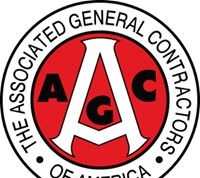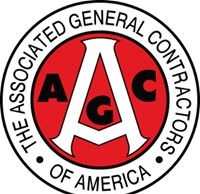New National Report Shows Commercial Real Estate Recovering But Still Not Up to Full Potential
Continued Growth Projected but Risks Remain From Global Slowdown, Uncertainty over U.S. Fiscal Policy, Terrorism Risk Insurance Expiration
WASHINGTON, D.C. – October 8, 2013 – (RealEstateRama) — Development and construction of new commercial real estate – office, industrial and retail buildings – continued its climb in 2012, supporting approximately 2.3 million American jobs and contributing $303.4 billion to the nation’s economy, marking the second year that the sector posted gains since 2007, according to a new report released today by the NAIOP Research Foundation. But industry experts warn that global economic sentiment and uncertainty in Washington and state capitals are dampening a more fulsome recovery in the sector. The report can be found at http://bit.ly/CREcontributions2013
U.S. Media Search Engine |
NAIOP in National News |
Study Highlights Include:
- Commercial real estate alone supported at least 2.3 million American jobs in 2012
- Commercial real estate contributed $303.4 billion to U.S. GDP, a 16% increase from 2011
- Construction and development spending grows nearly 10% from 2011
- 307.5 million square feet built in 2012, a 29% increase from 2011
In 2012, the commercial real estate development sector added $303.4 billion to the U.S. GDP, up from $261.6 billion in 2011, a near 16 percent increase, according to the report. This addition to the economy generated $96.7 billion in new personal earnings and supported 2.3 million full-time equivalent, year-round jobs.
“The commercial real estate industry is improving, yet is being hindered from reaching its full potential. Developers and investors have to be able to anticipate levels of demand three-to-five years ahead, but their vision is clouded because of uncertainty in Washington and in state capitals, which explains the slow pace of recovery. If we don’t get clarity on budget policy, tax reform or the renewal of terrorism risk insurance, it will hold us back from our true potential to really drive greater job creation and economic growth in America. We’re working on these issues by actively representing the interests of our industry in Washington and in state capitals,” said Thomas J. Bisacquino, president and CEO of NAIOP.
The sector reached its equilibrium in 2012 providing the support for broad-based spending in the development (pre-construction, construction and post-construction) of commercial real estate. Construction spending on commercial real estate totaled $100.1 billion, a 9.9 percent increase over 2011.The increases in construction spending and activity resulted in the building of 307.5 million square feet of new space, an increase of 29 percent from 2011.This new space has the capacity to house 775,800 jobs.
The report’s author, economist Stephen S. Fuller, PhD, Dwight Schar Faculty Chair, University Professor and the Director of the Center for Regional Analysis at George Mason University, agreed that growth projections were positive but that there were clouds on the horizon.
“These gains and planned projects face a difficult economic road as current changes in fiscal policy and decreases in federal spending threaten the current projections of increased GDP growth and job creation through 2015,” said Dr. Fuller.“These advances and increased projects are paramount to continued growth in the country, as the U.S. economy cannot achieve sustained expansion in the absence of the development industry’s full recovery.”
Top Ten States for Commercial Real Estate
As the recovery continued, states from coast-to-coast generated new projects and billions in spending.The states below posted the highest construction values for development of office, industrial, warehouse and retail commercial real estate (number in parenthesis refers to that state’s top-ten rank in 2010):
- New York (Previous rank: 2), $4.80 billion in spending, supporting 122,600 jobs
- Texas (1), $4.34 billion in spending, supporting 162,877 jobs
- Iowa (NR), $2.92 billion in spending, supporting85,753 jobs
- California (4), $2.88 billion in spending, supporting 96,572 jobs
- Ohio (NR), $2.04 billion in spending, supporting 76,830 jobs
- Florida (7), $1.97 billion in spending, supporting 78,274 jobs
- Massachusetts (9), $1.78 billion in spending, supporting 49,653 jobs
- North Carolina (10), $1.75 billion in spending, supporting 68,819 jobs
- Illinois (8), $1.64 billion in spending, supporting 56,654 jobs
- Georgia (NR), $1.58 billion in spending, supporting 61,715 jobs
This report enables the commercial real estate industry to quantify the numbers that demonstrate its considerable and sustained contribution to the U.S. economy while marking the need for a succinct fiscal policy to aid in the continued growth of the industry. With this data, public, state and local governments can learn the ways that commercial development makes a positive and lasting contribution to their communities, including:
- Supporting the creation of jobs;
- Generating personal earnings, and;
- Promoting new spending activity across the breadth of the economy.
The report was produced using data provided by the Bureau of Economic Analysis, U.S. Department of Commerce, U.S. Census Bureau, McGraw Hill Construction and a NAIOP member survey. The NAIOP Research Foundation published fiveprevious editions of this report in 2006, 2008, 2009, 2010 and 2011.
# # #
* Note to Editors: Please note that the official/legal name of the association is NAIOP. If additional information is needed, the association can be called NAIOP, the Commercial Real Estate Development Association. The former name (National Association of Industrial and Office Properties) is no longer accurate and was changed in January 2009.
# # #
About the NAIOP Research Foundation: The NAIOP Research Foundation was established in 2000 as a 501(c)(3) organization to support the work of individuals and organizations engaged in real estate development, investment and operations. The Foundation’s core purpose is to provide these individuals and organizations with the highest level of research information on how real properties, especially office, industrial, retail and mixed-use properties, impact and benefit communities throughout North America. For more information on how to contribute or for complimentary research reports, visit www.naioprf.org.
















